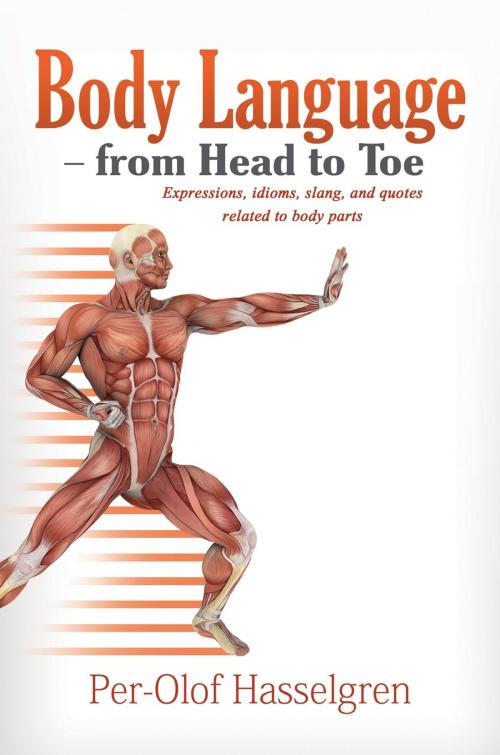Body Language from Head to Toe
Expressions, idioms, slang, and quotes related to body parts
Nonfiction, Reference & Language, Language Arts, Linguistics| Author: | Per-Olof Hasselgren | ISBN: | 9781681812830 |
| Publisher: | Strategic Book Publishing & Rights Co. | Publication: | August 19, 2015 |
| Imprint: | Strategic Book Publishing & Rights Co. | Language: | English |
| Author: | Per-Olof Hasselgren |
| ISBN: | 9781681812830 |
| Publisher: | Strategic Book Publishing & Rights Co. |
| Publication: | August 19, 2015 |
| Imprint: | Strategic Book Publishing & Rights Co. |
| Language: | English |
Written by a physician, Body Language from Head to Toe is a “dictionary” of American idioms and other expressions that contain the name of a body part.The use of body part-related expressions is both interesting and fun. This book contains about 2,000 such idioms, words, and expressions, such as “with the back against the wall,” “brainstorming,” “sweet tooth,” and “tongue in cheek.”Says author Per-Olof Hasselgren, “As a surgeon, I understand the importance of anatomy and the knowledge of organs and tissues. This book reflects my longstanding interest in idioms and other expressions referring to body parts, and it ‘connects’ anatomy with the spoken and written language.”This book was written for three main reasons. First, anatomy matters, particularly in surgery. During the last several years, collecting such expressions became a hobby for the author.Second, as someone moving to this country from another part of the world, Dr. Hasselgren is interested in the peculiarities of the American language. Idioms, slang, and other expressions are specific for any given language and quite often cannot be directly translated.Third, when one starts to be aware of them, written and spoken body language can become quite entertaining.
Written by a physician, Body Language from Head to Toe is a “dictionary” of American idioms and other expressions that contain the name of a body part.The use of body part-related expressions is both interesting and fun. This book contains about 2,000 such idioms, words, and expressions, such as “with the back against the wall,” “brainstorming,” “sweet tooth,” and “tongue in cheek.”Says author Per-Olof Hasselgren, “As a surgeon, I understand the importance of anatomy and the knowledge of organs and tissues. This book reflects my longstanding interest in idioms and other expressions referring to body parts, and it ‘connects’ anatomy with the spoken and written language.”This book was written for three main reasons. First, anatomy matters, particularly in surgery. During the last several years, collecting such expressions became a hobby for the author.Second, as someone moving to this country from another part of the world, Dr. Hasselgren is interested in the peculiarities of the American language. Idioms, slang, and other expressions are specific for any given language and quite often cannot be directly translated.Third, when one starts to be aware of them, written and spoken body language can become quite entertaining.















